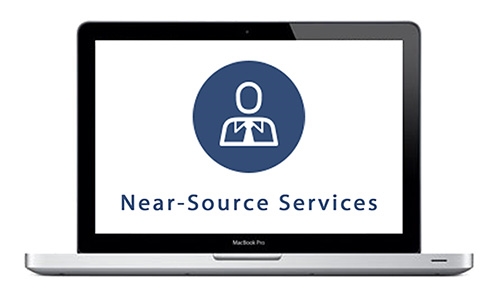In November, 2017, Facebook announced that their extremely popular Facebook Messenger application would allow businesses to speak to customers on both their own websites and from within Facebook Messenger. Read on to discover how your business can benefit from this feature!
The How
By installing a plug-in called Customer Chat, retailers can integrate Facebook Messenger with their website, letting their customer support representatives carry on conversations with clients just like they would on Facebook.
Facebook Messenger’s Best Feature Yet?

Best practices for SMB Facebook pages

Considering the most recent stats of Facebook’s daily usage -- an astounding 1 billion daily mobile users, to be exact -- it’s time to take another look at your company’s page. Even if you’re actively managing your page, changes and updates are so frequent at the social media colossus that there’s likely a feature or opportunity you’ve missed.
Hackers Get Away With $63,000 in Online Banking Attack
Hackers continue to target online banking transactions as many SMBs do not realize the vulnerabilities in their current arrangements with their bank. Left unaddressed, you run the risk of allowing cyber-criminals to steal tens of thousands of dollars right from under your nose. In a recent attack, cyber-thieves managed to get away with $63,000 after they exploited vulnerabilities in the online payroll system of a small business with its bank. First, the crooks managed to infiltrate the company’s system through a piece of malware called the Zeus Trojan. This gave them access to the company’s data, including the password and username used in transacting with the company’s bank. The thieves then created several new ghost employees and created payroll accounts for them, which they sent to the bank and authenticated using the company controller’s username and password. And to cover their tracks, the hackers erased the confirmation emails regarding the transaction. This incident highlights the need for better security systems in both the business and their bank – as security experts cite online banking transactions as one of the favorite targets of cyber-criminals. Cyber-attacks such as this one exploit weaknesses in many existing systems that rely on very simple and automated authentication procedures to confirm transactions. A direct threat to your business finances is not something to be taken lightly. You not only need to review your current online banking system, but also the current security protocols you have installed, since hackers and cyber-criminals are constantly updating Trojans and other malware to adapt to changing IT protection systems. We encourage you to have us take a look at the systems you have in place to determine if you are at risk for attacks like these. Please do not hesitate to contact us and we will be happy to draw up custom security solutions that address your specific needs. References: Sold a Lemon in Internet Banking Cybercrooks Drive Away With $63,000 from Car Dealership
Is Spending Extra for Smartphone Protection a Smart Move?
Smartphones benefit companies because they improve productivity. Providing protective cases to employees with Smartphones reduces liability to replace damaged devices. Many businesses all over the world issue Smartphones to their employees. While they can seem expensive for many small to medium-sized business owners, with the greater amount of work done at a faster pace, Smartphones are an ideal business solution. However, since Smartphones are lightweight and portable they are carried around everywhere, making them very prone to accidental drops. Despite the advances in technology, some Smartphones are more prone to damage than others. Touchscreens are generally more susceptible to damage because they usually don’t have an extra layer of plastic on their screens. And when these devices are damaged, not only do you incur the cost of repair or replacement, you also risk losing valuable data that’s stored in them. So, should you spend more to protect your employees’ Smartphones? Some people think it depends on your industry. According to Tim Doherty, research analyst for small to mid-sized business markets at research firm IDC, most blue-collar employees should be provided with protective cases for their Smartphones since their work environments are more likely to be physical in nature. Equipping these employees with cases like the OtterBox or rugged devices such as those being offered by Motorola is a good move. Meanwhile, according to Doherty, white-collar employees using Smartphones only have “a moderate risk of drop or damage” because they usually put their devices inside their bags or pockets. Still, providing these employees with “a basic rubberized case makes a lot of sense,” adds Doherty. He also adds that providing cases lessens “the company’s liability to replace damaged devices.” Some analysts think, however, that cases citing damaged Smartphones due to accidental drops have been exaggerated. Analyst and Partner Michael Gartenberg of Altimeter Group believes that cases can protect and personalize your Smartphone, but he does not agree that these cases are essential accessories. Gartenberg claims that, “Most phones are rugged enough to handle the usual bumps and abrasions of everyday life and most screens are quite scratch resistant.” He adds that normal maintenance will ensure that most Smartphones work well. In addition, Gartenberg believes that if users are aware that their Smartphones have additional protection, they may tend to be less careful when using their devices. Still, Tim Bajarin, President of Creative Strategies, a firm that provides industry analysis for the technology sector, believes that a Smartphone case “isn’t much of an investment . . . yet it can go a long way.” As Bajarin says, we should treat these cases as insurance. With just a little extra expense, you not only protect a $200 to $300 Smartphone, you may also save your business from a loss of thousands of dollars worth of data stored in a single device.
Efficient IT for Less for Your Small Business
Back in the day, only big companies were eligible to use state-of-the-art IT solutions and enjoy 24/7 security. Thanks to Managed Services, superb yet economically priced IT is now readily available to small and medium-sized businesses. Like a lot of small to medium-sized businesses these days, you perhaps have become greatly reliant on Information Technology (IT). You certainly want your own IT department to offer the functionality and security that huge organizations benefit from. But cost is most likely holding you back — the large amount of money needed to design, install and maintain such a setting is usually too expensive for smaller organizations. Fortunately, today you can have both the best IT and the most cost-efficient solution — because in Managed Services, they are one and the same. Managed Services is an IT model that provides IT management and security remotely. Utilizing the latest and most sophisticated technology, we can readily monitor and manage your network, determine possible issues, and solve them before they harm your business. These are the 2 major advantages: Superior IT – With Managed Services, you can accomplish the functionality and security that previously was only available to large companies. Inexpensive Price – Enjoy better IT without costing a fortune. Because of economies of scale, Managed Services enables you to create an infrastructure that delivers essential IT services to staff and clients without having to build or maintain these services internally. Contact us now to learn how our Managed Services can help improve your IT and save you money.
Disaster Recovery Plan: Why It’s Impossible to Survive Without One
Since disasters are erratic in nature, any forward-thinking company knows that it cannot survive one unprepared. With a disaster recovery plan in place, you’ll have peace of mind and the confidence that your business can continue after a disaster — and without much interruption. Simply put, organizations that suffer data losses generally fail as a consequence. In fact, that statement is based on study by the Department of Trade and Industry, which discovered that 70% of small businesses that experience a major data loss eventually go out of business within 18 months. This statistics shows that a majority of small businesses have failed to protect themselves against a number of problems. According to Ontrack, data loss is due to the following: Human error – 44% of the time System or hardware breakdown – 32% of the time Software malfunction – 14% of the time Computer virus – 7% of the time Site disaster – 3% of the time Data loss is very catastrophic—because your data is critical to your business. To illustrate this, just imagine the outcome if you lost access to your IT systems, including: Client databases Supplier information Financial reports and documents — from invoices to tax records Product catalogs Marketing materials Emails and correspondences Document templates Employee records Like insurance to your business assets, the same idea is applicable to your data. Regardless of its location, your data needs to be constantly protected from every potential danger. The good news is that with a strong disaster recovery plan and an efficient backup solution, you can easily resume business in just minutes or a few hours in most instances. With these crucial things in mind, it’s best to protect your data to secure your business. Ask us how today.
Be Seen, Be Found through Geolocation
More and more people these days are looking to geolocation for directions in the same way people looked at yellow pages years ago. The thing is, things aren’t so simple anymore, so you need something more than a generic description to put yourself on the map and make yourself felt. There’s a boom in geolocation platforms these days. Geolocation is a means through which people can track various locations through their mobile phone devices. Experts see a continued rise in the relevance and effects of geolocation, especially for small and medium-sized businesses who are looking for good but cost-effective ways to put themselves on the proverbial map. “When you’ve expanded the ability to track geolocation data from the 200 to 1,000 large businesses that could previously afford it to 26 million small businesses, you’re bound to see a bunch of creative experiences built around that data,” says Yan-David Erlich, CEO of Morpho, a new geolocation firm. The potential is vast, and there is little to lose. Especially considering the success of geolocation-enabled social network platforms such as Foursquare, putting yourself on the geolocation map might just be more than worth your while. Here are a few tips to get you started: Be a direct part of the community. Create an account, participate, and make yourself (or at least someone to represent your online presence) regularly felt. Customization is always key. Share something unique about your business – don’t make your profile generic and ordinary. You have to stand out, so choose a particular trait of your business you are particularly proud of, or something that sets you apart from the rest. Make sure to utilize as many keywords possible – but only within the bounds of practicality. And don’t forget links to your own website. Know what the competition is up to. There’s nothing wrong with checking out what competitors are doing to establish themselves in the geolocation map. Who knows, you might even learn a thing or two, and then be able to apply improvements and adjustments to your own strategies. Read the whole article at: https://technology.inc.com/telecom/articles/201007/geolocation.html?partner=newsletter_Technology If you are looking at taking some concrete steps to establishing yourself and making your presence much more significant, please don’t hesitate to contact us and we’ll be happy to sit down and develop a customized geolocation strategy that works for you.

